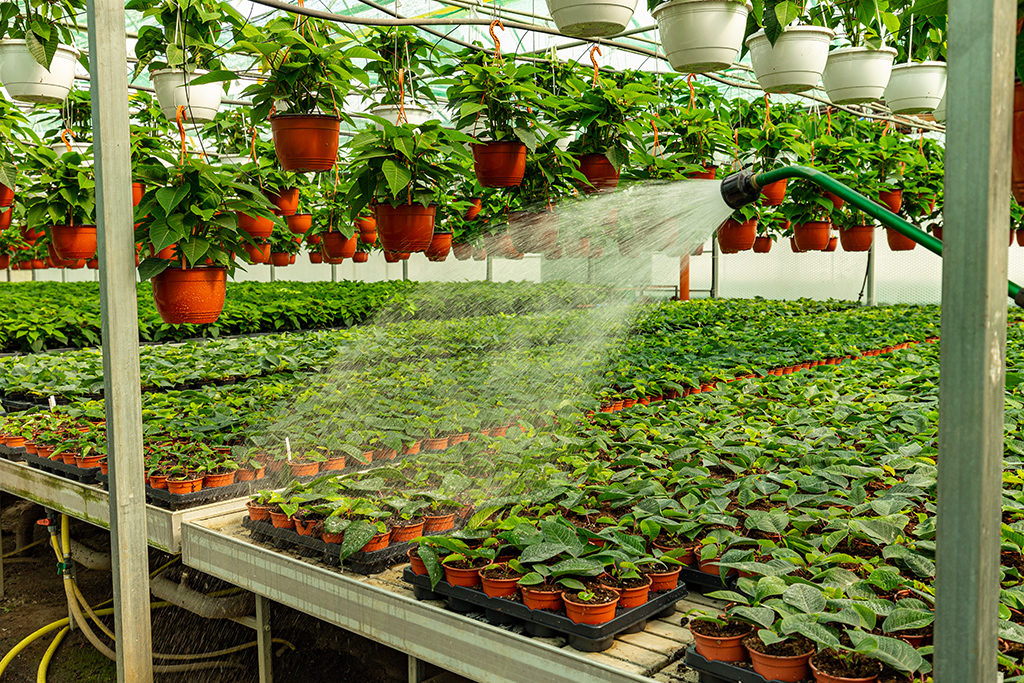 Editor’s note: Advocating for the floral industry’s needs on Capitol Hill is a key priority for the Society of American Florists. What issues are most likely to impact you and your business – and how? What is SAF doing about it? In this ongoing series, SAF senior lobbyist Joe Bischoff breaks down one issue at a time and outlines SAF’s advocacy work on it. This week, Bischoff talks about increasing funding for the Floriculture Nursery Research Initiative and how the industry—and your business—benefit from its work. And with registration now open for Congressional Action Days 2021, it’s a great time to get up to speed on the issues.
Editor’s note: Advocating for the floral industry’s needs on Capitol Hill is a key priority for the Society of American Florists. What issues are most likely to impact you and your business – and how? What is SAF doing about it? In this ongoing series, SAF senior lobbyist Joe Bischoff breaks down one issue at a time and outlines SAF’s advocacy work on it. This week, Bischoff talks about increasing funding for the Floriculture Nursery Research Initiative and how the industry—and your business—benefit from its work. And with registration now open for Congressional Action Days 2021, it’s a great time to get up to speed on the issues.
Why are we taking on this issue?
FNRI is a federally funded program through the USDA’s Agricultural Research Service (ARS). It was initially conceived by the industry in the 1980s with the intent to help guide and support floriculture and nursery research priorities. FNRI is vital to our efforts to respond to pest and disease challenges, enhance the efficiency and sustainability of our production practices and broaden the message of the positive environmental and social impact of our crops. With the appropriate resources, FNRI can play a significant role in the floriculture industry’s pursuit of reducing pesticide and chemical use and cutting greenhouse gas emissions (GHGs) throughout the supply chain. SAF is asking Congress to increase its financial support for FNRI by $1 million.
Why do we have to ask for funding each year—and what happens if we don’t ask for it?
It’s vital that we regularly remind Congress about the importance of FNRI, a program that has received $111 million in research funding to date. At times we have to ask for a funding increase in order to keep up with rising research costs and enhance the program’s ability to make advances using new technologies and techniques. Between 2008 and 2017 we witnessed what happens when a program like FNRI takes a back seat to other issues from an industry advocacy standpoint. During that time, more than $500,000—about 10% of the program’s total annual funding—was lost and allocated to other non-floriculture and nursery programs. Since that time, SAF has consistently made appropriations requests and put the issue front and center at CAD, yielding a $1 million increase to the program in 2018. We need to regularly remind Congress and the administration that there is an industry and constituents who care about and watch the health of FNRI.
How do we decide how much money to ask for—and why not ask for more?
$1 million is essentially the cost of a new senior scientist and support staff within USDA’s Agriculture Research Service. If we want to take on new issues like breeding with new technologies or stand up a research effort around climate change, we need to have the necessary funding to launch it. The reality is that a federal program is a lot like a business—if you aren’t growing, you’re shrinking. Costs for labor and healthcare increase every year, and if you’re not bringing in new dollars, it erodes capacity of the program to pursue the research. Given FNRI is currently a $5.5 million program, a $1 million increase is significant and strengthens our position in the years to come.
Who decides which research projects get to use these funds? And how do they help the entire industry?
SAF’s role is to make sure the resources are there to do the work. Determining which projects are funded is a collaborative effort between the National Program Staff at USDA and an industry panel put together by the American Floral Endowment. AFE also solicits the opinion of SAF’s Growers Council in the selection process. FNRI is one of the few programs at USDA that is designed to respond to the needs of the industry and is regularly highlighted within the department as an example of how it should pursue applied research. Recent projects that affect the entire industry include research on extending the “shelf-life” of fresh cut stems, reducing pesticide application with precision technology and mitigation and management programs designed to overcome invasive diseases.
What can members do to get involved?
Join us for Congressional Action Days. At the event we’ll do a meeting with Tim Rinehart, USDA’s national program leader for FNRI. He’ll provide an overview of the program, share recent successes and expectations for the future. It will be a great opportunity to find out what Agriculture Research Service locations and universities are doing the research work—some might be in your backyard. His insights will help you educate Congressional offices about the importance of FNRI. We need SAF members to spread the word on the Hill about how important FNRI is to the industry and your business. We already have some strong congressional champions for FNRI but there is always room for more.
On April 13-14, floral industry members will gather virtually in dozens of meetings with the key decision makers on Capitol Hill and in regulatory agencies as part of SAF’s annual Congressional Action Days. This year’s virtual format makes it easy to participate from the comfort of your home or business—and registration is free! Register today!
Katie Butler is the senior vice president of the Society of American Florists.

